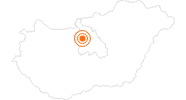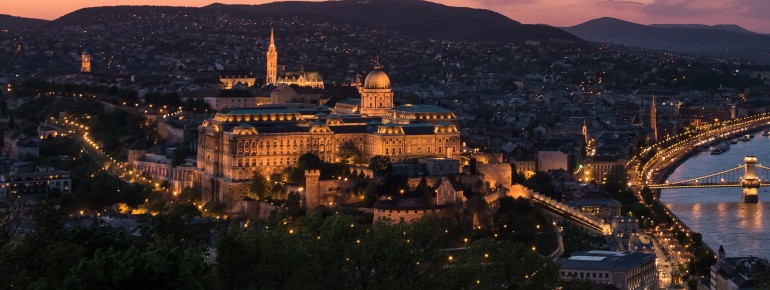Contents
Description
Castle Palace, also known as Budavári Palota, rises majestically above the city on Castle Hill and ranks among the most iconic landmarks in Budapest. Once the royal residence of Hungary’s kings, the historic palace is now a vibrant center for art, history, and culture.
Inside the castle walls, you’ll find three major cultural institutions. The Hungarian National Gallery displays paintings and sculptures spanning several centuries of Hungarian art history. The Budapest History Museum takes visitors on a journey through the city's past, from the Middle Ages to the modern era. And the Széchényi National Library ranks among Central Europe’s most important repositories of knowledge.
The exterior of the palace is equally striking: grand courtyards, ornate baroque façades, and commanding statues bring its regal past to life. One of the most eye-catching sights is the equestrian statue of Prince Eugene of Savoy in front of the main entrance – a tribute to his victories against the Ottomans. Enter through the Habsburg Gate, and you’ll be greeted by the mythical Turul bird, a powerful symbol in Hungarian folklore.
The castle’s terraces offer breathtaking views across the Danube and the cityscape of Pest – a magical panorama, especially at sunset. Even if you’re not visiting the museums, the castle grounds are open around the clock and perfect for a walk steeped in history.
Historical Information
The roots of Castle Palace stretch back to the 13th century. During the reign of King Matthias Corvinus in the 15th century, it evolved into one of Europe’s grandest royal courts. In the centuries that followed, the palace witnessed numerous power shifts – from Hungarian monarchs to Ottoman occupiers and eventually the Habsburgs. The latter left a lasting mark, adding many of the baroque elements still visible today. After suffering extensive damage in World War II, the castle was painstakingly restored and is now part of the UNESCO World Heritage Site of Budapest.
How to get there
Castle Palace is perched on Castle Hill in the historic Buda district, directly above the iconic Chain Bridge. The easiest way to reach the castle is via the historic funicular railway, which ascends from Clark Ádám Square straight to the palace gates.
A more budget-friendly option is bus line 16, which runs from the centrally located Deák Ferenc tér through the Castle District. If you prefer to walk, you can hike up to the castle – either via the Habsburg Steps or through the monumental Habsburg Gate.
Once in the Castle District, you’ll also find other must-see sights nearby, including the Fisherman’s Bastion and Matthias Church, both of which pair perfectly with a visit to Buda Castle.




